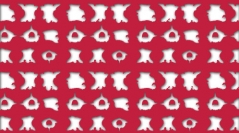

 Geodiversitas
42 (20) - Pages 343-376
Geodiversitas
42 (20) - Pages 343-376Two fossiliferous karstic fissures from the Mokrá-Western Quarry, MWQ (1/2001 Turtle Joint; 2/2003 Reptile Joint) provided a diverse vertebrate fauna from the early Miocene (Burdigalian, MN 4) including squamates. The rather warm climatic conditions during the Miocene Thermal Maximum (17.8-17.7 Ma) enabled dispersal of thermophilic lizards and snakes throughout Central Europe. In total, ten major clades have been identified in MWQ localities, including: Lacertidae (Lacertidae indet., Lacertidae tooth morphotype 1 and 2); Amphisbaenia (Amphisbaenia indet.); ? Scincoidea (? Scincoidea indet.); Anguidae (Pseudopus laurillardi (Lartet, 1851), Pseudopus sp., Ophisaurus sp., and Anguinae indet.); Varanidae (Varanus mokrensis Ivanov, Klembara, Ruta & Böhme, 2018); Boidae (Bavarioboa cf. hermi Szyndlar & Schleich, 1993); Pythonidae (Python sp.); Colubridae (Colubridae gen. et sp. indet., Coluber [s.l.] sp., and “Colubrinae” indet. type 1), Natricidae (Natrix sp. and “Natricinae” indet.); Viperidae (Viperinae [‘Oriental vipers’ group], Vipera sp. [‘European vipers’ group]); and Elapidae (Elapidae gen. et sp. indet.). Python sp. from the MWQ represents the first known occurrence of this most thermophilic Neogene squamate taxon within the area of Central Paratethys and we assume that MAT did not fall below 18-19 °C in the vicinity of this locality during the late Burdigalian stage. These humid subtropical to paratropical climatic conditions, also documented by several full-aquatic and semi-aquatic amphibians and reptiles, were suitable for the occurrence of other thermophilic lizard and snake taxa reported from MWQ, including Varanus mokrensis, Pseudopus laurillardi, Bavarioboa, large Elapidae and ‘Oriental vipers’.
Squamata, lizards, snakes, biogeography, Neogene, Moravia, Central Europe